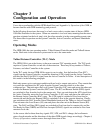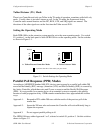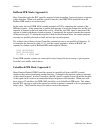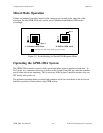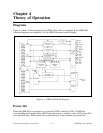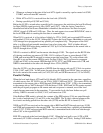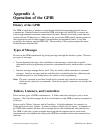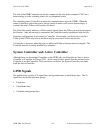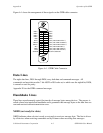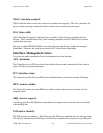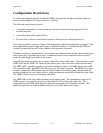
© National Instruments Corporation A-1 GPIB-100A User Manual
Appendix A
Operation of the GPIB
History of the GPIB
The GPIB is a link, bus, or interface system through which interconnected electronic devices
communicate. Hewlett-Packard invented the GPIB, which they call the HP-IB, to connect and
control programmable instruments manufactured by them. Because of its high system data rate
ceilings of from 250 kbytes/sec to 1 Mbytes/sec per second, the GPIB quickly became popular in
other applications such as intercomputer communication and peripheral control. It was later
accepted as the industry standard IEEE-488. The versatility of the system prompted the name
General Purpose Interface Bus.
Types of Messages
Devices on the GPIB communicate by passing messages through the interface system. There are
two types of messages:
• Device-dependent messages, often called data or data messages, contain device-specific
information such as programming instructions, measurement results, machine status, and data
files.
• Interface messages manage the bus itself. They are usually called commands or command
messages. Interface messages perform such functions as initializing the bus, addressing and
unaddressing devices, and setting devices for remote or local programming.
Note: The term command as used here should not be confused with some device instructions
which are also referred to as commands. Such device-specific instructions are actually data
messages.
Talkers, Listeners, and Controllers
There are three types of GPIB communicators. A Talker sends data messages to one or more
Listeners. The Controller manages the flow of information on the GPIB by sending commands to
all devices.
Devices can be Talkers, Listeners, and/or Controllers. A digital multimeter, for example, is a
Talker and may also be a Listener. A printer or plotter is usually only a Listener. A computer on
the GPIB often combines all three roles to manage the bus and communicate with other devices.
The GPIB is a bus like a typical computer bus except that the computer has its circuit cards
interconnected via a backplane bus whereas the GPIB has standalone devices interconnected via a
cable bus.



